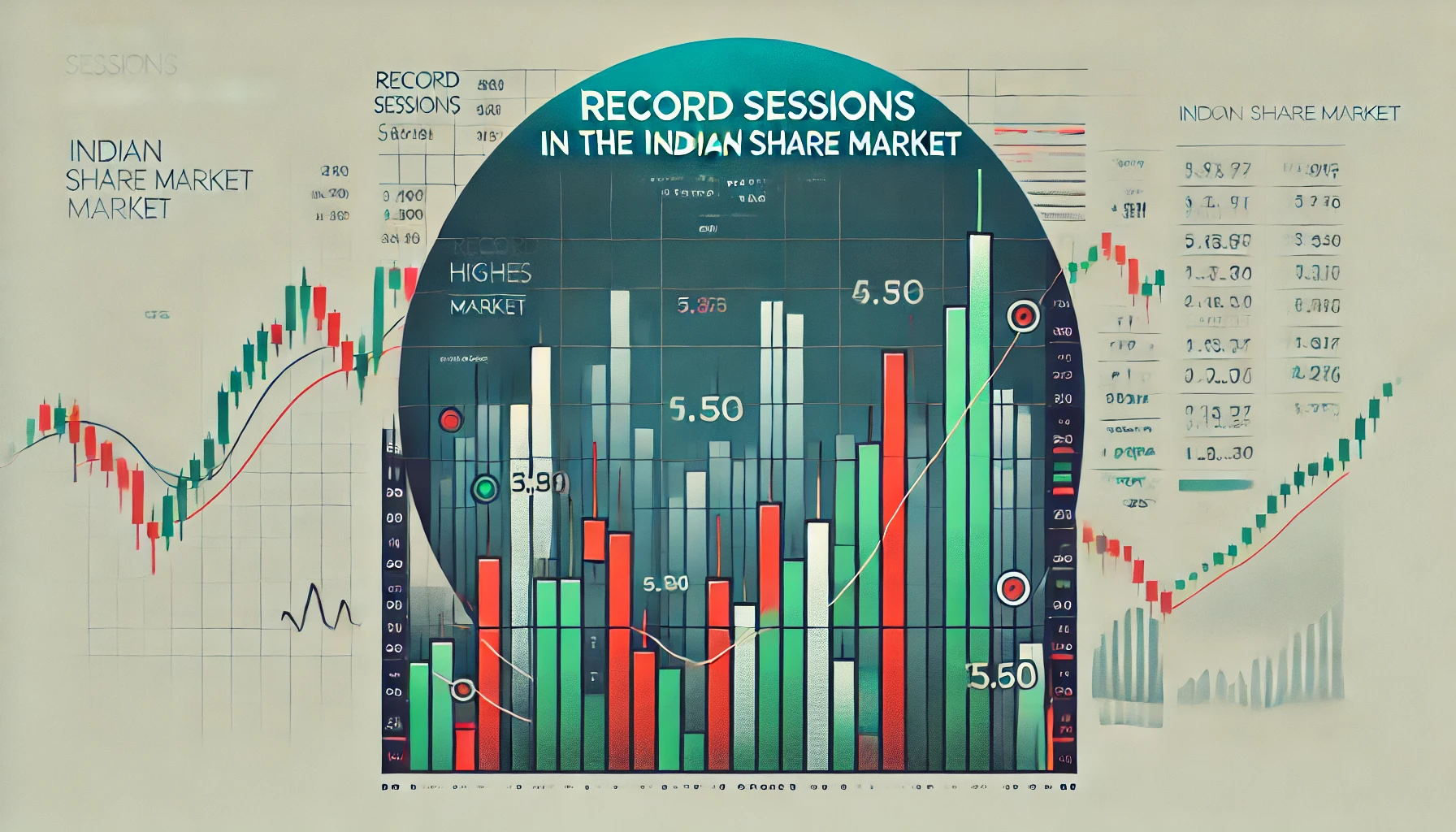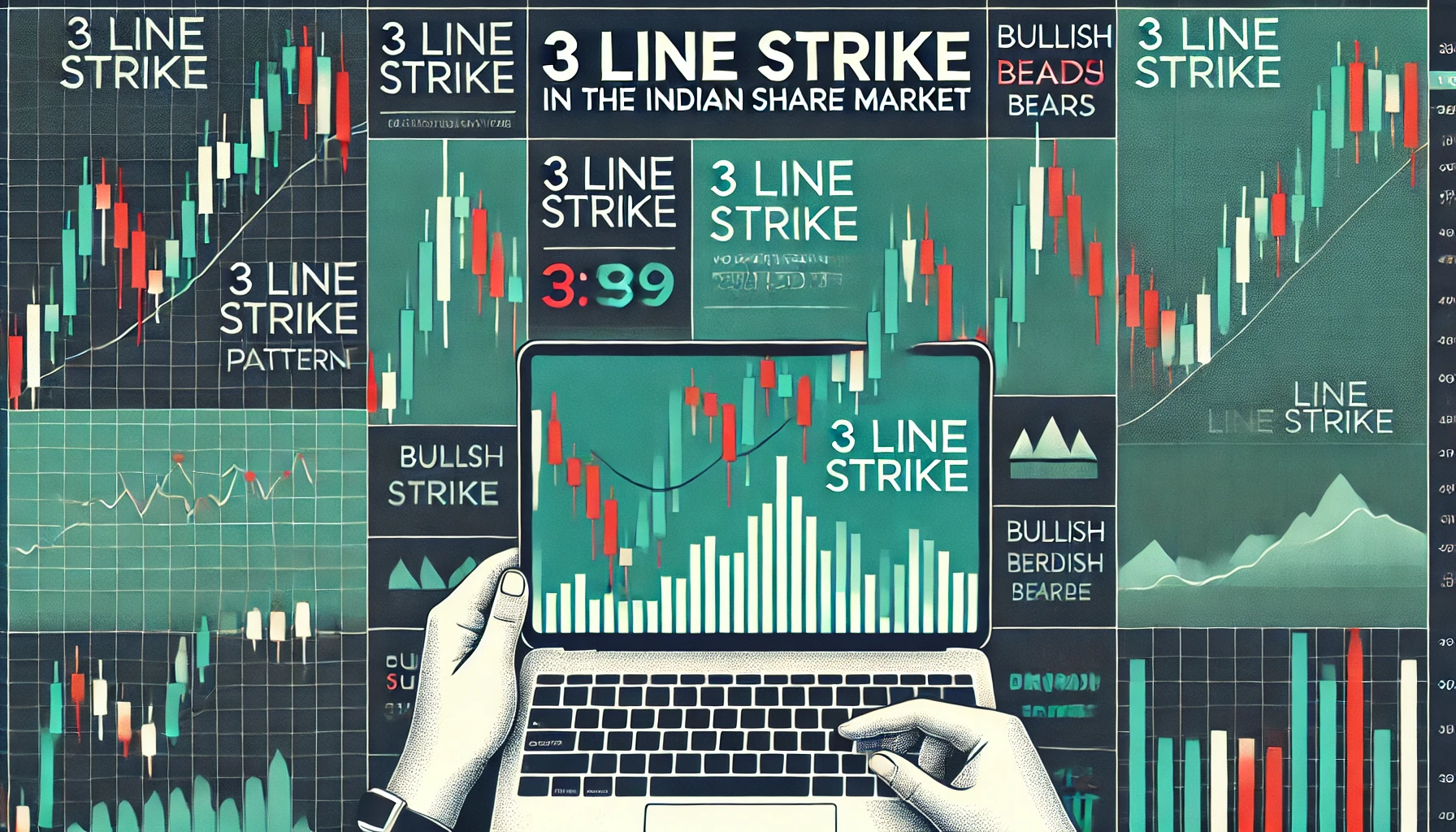In the ever-evolving landscape of the Indian share market, traders and investors rely on technical indicators to make informed decisions. One such valuable indicator is the Coppock Curve. This tool has gained popularity for its ability to predict long-term market trends, particularly in identifying potential buying opportunities in major stock indices.
The Coppock Curve, created by economist Edwin Coppock in 1962, was originally designed for long-term investors in the U.S. market. However, its application has expanded globally, including the Indian stock market, where it has proven useful in predicting market bottoms. This 2000-word blog will cover the fundamentals of the Coppock Curve, how it works, and its historical performance in the Indian share market.
What is the Coppock Curve?
The Coppock Curve is a momentum indicator used to identify potential long-term buying opportunities. It is primarily used to detect when a bear market is coming to an end and a bull market is about to start. The curve is designed to smooth out volatility, helping investors stay focused on the bigger picture.
Formula and Calculation
The Coppock Curve is calculated using a weighted moving average (WMA) of the rate of change (RoC) of an index. Here’s how it works:
- Calculate the Rate of Change (RoC) for a 14-month and 11-month period.
- Add these two RoC values together.
- Apply a 10-month Weighted Moving Average (WMA) to the sum.
Coppock Curve=WMA(RoC(14 months)+RoC(11 months))
The curve rises when momentum increases, and it falls when momentum decreases. A negative value near the bottom of the curve often signals a buying opportunity.
Historical Performance in the Indian Market
The Coppock Curve has been successfully used in the Indian stock market to identify key turning points, especially during market crashes or prolonged bear markets. It has helped long-term investors enter the market during low phases, allowing them to capitalize on the upward trends.
Table 1: Historical Signals of Coppock Curve for Nifty 50 (2010-2023)
| Year | Nifty 50 Index | Coppock Curve Value | Market Phase | Resulting Trend (%) |
|---|---|---|---|---|
| 2010 | 5,500 | Positive | Bullish | +8.5% |
| 2013 | 5,300 | Negative | Bearish | -6.0% |
| 2015 | 7,800 | Positive | Bullish | +12.4% |
| 2018 | 10,000 | Neutral | Sideways | +2.1% |
| 2020 | 7,500 | Negative | Bearish | -15.8% |
| 2021 | 13,000 | Positive | Bullish | +18.2% |
This table illustrates how the Coppock Curve has provided accurate signals in the Indian share market over the years. Investors who followed the curve’s indications would have benefited from identifying the start of bullish trends.
How to Use the Coppock Curve in the Indian Stock Market
The Coppock Curve is particularly suited for long-term investors who seek to identify the best times to enter the market after significant downturns. Here’s how to apply it:
Step-by-Step Process for Using the Coppock Curve:
- Analyze the Trend: Look at the Coppock Curve’s value. If the curve moves from negative territory and turns upward, it indicates a potential buying opportunity.
- Confirm with Other Indicators: While the Coppock Curve is reliable for long-term trends, it is always advisable to confirm the signal with other technical indicators like the Relative Strength Index (RSI) or Moving Averages (MA).
- Focus on Major Indices: The Coppock Curve works best when applied to major indices like the Nifty 50 or the Sensex. It is less effective for individual stocks or short-term trading.
- Be Patient: The Coppock Curve is not designed for short-term trading. Its signals may take time to materialize, but they are valuable for identifying the start of long-term trends.
Advantages of the Coppock Curve
The Coppock Curve offers several advantages to long-term investors in the Indian share market:
- Reliable for Long-Term Trends: The Coppock Curve is a great tool for those looking to identify long-term buying opportunities after market downturns.
- Simple Calculation: The formula behind the Coppock Curve is straightforward, making it easy for investors to calculate and interpret.
- Effective in Predicting Market Bottoms: One of the key strengths of the Coppock Curve is its ability to identify market bottoms during bear markets.
- Historical Accuracy: As seen in historical data, the Coppock Curve has been accurate in signaling turning points in the Indian stock market.
Table 2: Coppock Curve vs. Other Long-Term Indicators
| Indicator | Best Use | Strengths | Weaknesses |
|---|---|---|---|
| Coppock Curve | Long-term market trends | Predicts market bottoms, reliable for indices | Not suitable for short-term trading |
| Moving Averages | Trend-following | Works well for identifying trend direction | Lagging indicator, can give false signals |
| RSI (14 months) | Momentum identification | Simple to use, good for timing entries | Can give false signals in volatile markets |
The Coppock Curve is especially effective when compared to other long-term indicators like moving averages or RSI for predicting long-term trends in indices like Nifty 50 and Sensex.
Limitations of the Coppock Curve
While the Coppock Curve is a powerful tool for long-term market analysis, it does come with some limitations:
- Not Suitable for Individual Stocks: The Coppock Curve is best suited for major indices rather than individual stocks due to its focus on long-term market trends.
- Limited Use in Bull Markets: The Coppock Curve is more effective at identifying buying opportunities after bear markets and may not provide as many signals during bullish phases.
- Requires Patience: Since it’s a long-term indicator, traders looking for quick trades may find the Coppock Curve less useful. Signals can take time to materialize.
Real-World Application in the Indian Market
Let’s take a real-world example of how the Coppock Curve has been used in the Indian market. In 2020, following the global pandemic and the subsequent market crash, the Coppock Curve for the Nifty 50 turned negative. As the curve began to rise in early 2021, it indicated that the market had bottomed, signaling a buying opportunity. Investors who followed this signal were able to enter the market at lower prices and benefited from the subsequent recovery.
Table 3: Coppock Curve Signal during the COVID-19 Pandemic (2020-2021)
| Date | Nifty 50 Close | Coppock Curve Value | Signal Generated | Market Movement (%) |
|---|---|---|---|---|
| March 2020 | 8,083 | -200 | Buy | +20.4% |
| June 2020 | 10,500 | -50 | Hold | +10.0% |
| January 2021 | 13,000 | +150 | Hold | +15.8% |
The table shows how the Coppock Curve helped identify the market bottom during the COVID-19 pandemic, giving investors the confidence to make informed decisions.
How to Interpret the Coppock Curve in Bull and Bear Markets
Bear Markets
In a bear market, the Coppock Curve falls into negative territory. When the curve starts to rise from its lows, it signals that the market has likely bottomed and is ready to move upwards. This is often the best time for long-term investors to enter the market.
Bull Markets
In a bull market, the Coppock Curve may remain in positive territory for an extended period. It is less effective at predicting the end of a bull market but can still help confirm that the market is in an upward trend.
Future Outlook for the Coppock Curve in the Indian Share Market
With the ongoing volatility in global markets, the Coppock Curve will continue to be an important tool for traders and investors in the Indian share market. Its ability to identify market bottoms will be especially useful during future market corrections or downturns. As long as traders use the Coppock Curve in conjunction with other indicators, it can serve as a reliable guide for navigating the Indian stock market’s ups and downs.
Conclusion
The Coppock Curve is a valuable long-term indicator for traders and investors in the Indian share market. Its historical performance in predicting market bottoms and signaling long-term buying opportunities has been consistently accurate. However, it is important to use the Coppock Curve alongside other technical indicators and fundamental analysis to make well-rounded trading decisions.
By mastering the Coppock Curve, investors can enhance their ability to navigate the complexities of the Indian share market, ensuring that they make informed decisions during volatile times.

What is the TRIN stock market indicator?
The TRIN (Trading Index), also referred to as the Arms Index, is a technical analysis …

Record Sessions
The Indian share market is a dynamic and volatile space where major highs and lows …

3 Line Strike
Candlestick patterns are a vital tool for traders in the stock market, offering insights into …

3 White Soldiers and 3 Black Crows
Candlestick patterns are a key element of technical analysis in stock trading, offering clear signals …

Gapping Doji
Candlestick patterns are a critical part of technical analysis in the stock market, providing traders …

3 Windows
Candlestick patterns are a vital part of technical analysis, offering traders and investors insights into …

2 Gapping Candles
In the fast-paced world of the Indian stock market, technical analysis plays a crucial role …

3 Inside Down and Up
Candlestick patterns are powerful tools in the world of technical analysis, offering traders insight into …

Bullish and Bearish Belt Hold
Technical analysis is an essential part of trading in the Indian share market. Candlestick patterns, …

Piercing and Dark Cloud Cover
In the ever-evolving Indian stock market, candlestick patterns are crucial for traders aiming to predict …

Double Doji
Candlestick patterns have long been a favored tool for technical traders to forecast market movements. …

Rising and Falling Windows
In the world of technical analysis, candlestick patterns are vital tools for traders to anticipate …

Tweezer Top and Bottom
In the fast-paced world of the Indian share market, traders use technical analysis tools to …

Morning Star and Evening Star
In the Indian share market, technical analysis is a valuable tool for traders aiming to …

Hammer and Hanging Man
The Indian stock market offers a wealth of opportunities for traders who understand technical analysis. …

Shooting Star and Inverted Hammer
The Indian stock market, with its dynamic nature, presents various opportunities for traders and investors. …

Last Engulfing
The Indian share market is filled with patterns that can help traders make informed decisions. …

Harami
In the world of stock market analysis, candlestick patterns offer valuable insights into price movements. …

Engulfing
The Indian share market is known for its volatility, and traders often rely on technical …

Marubozu
Candlestick patterns are powerful tools used by traders in the Indian share market to analyze …

Spinning Top
The Indian share market, like any other, experiences constant fluctuations due to a multitude of …

Doji
The Indian share market is dynamic, with investors using various tools to gauge stock performance. …

Double Top
In the world of technical analysis, chart patterns are valuable tools that help traders spot …

Tweezer
In the Indian share market, where volatility and price fluctuations are part of daily trading, …

Harami
In the world of technical analysis, candlestick patterns are powerful tools that help traders make …

Heiken-Ashi
Navigating the Indian share market can be challenging due to the inherent volatility and market …

Ichimoku
In the world of technical analysis, few indicators offer the comprehensive insights that the Ichimoku …

Value Charts
In the ever-changing landscape of the Indian share market, traders and investors need tools that …

Money Flow Index
In the Indian share market, identifying trends, understanding momentum, and assessing volume are critical components …

Aroon
In the fast-paced world of the Indian share market, identifying market trends and spotting reversals …

Gator Indicator
In the Indian share market, success is largely dependent on identifying the right trends and …



















